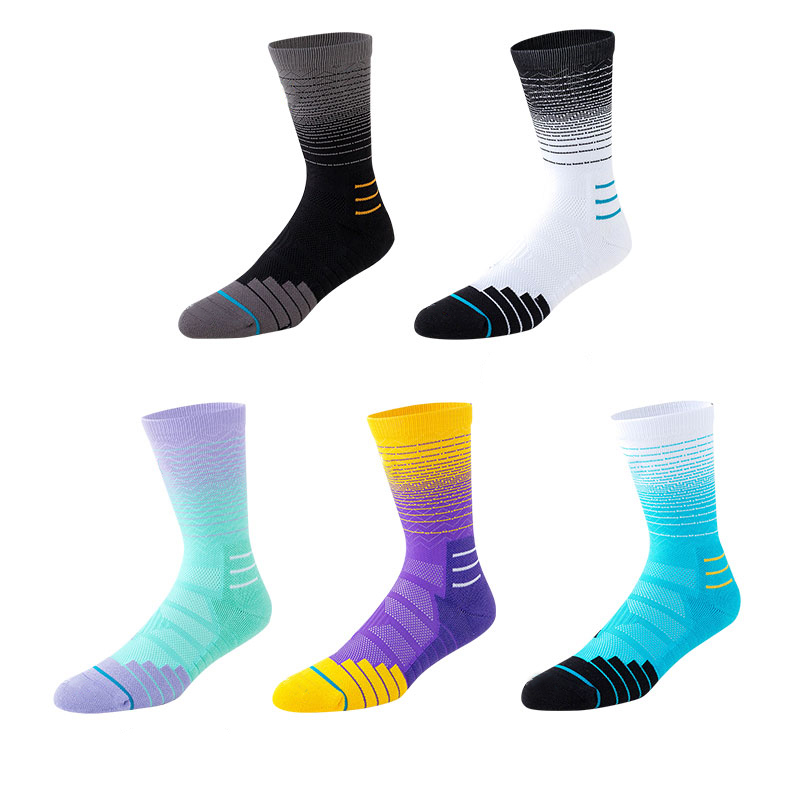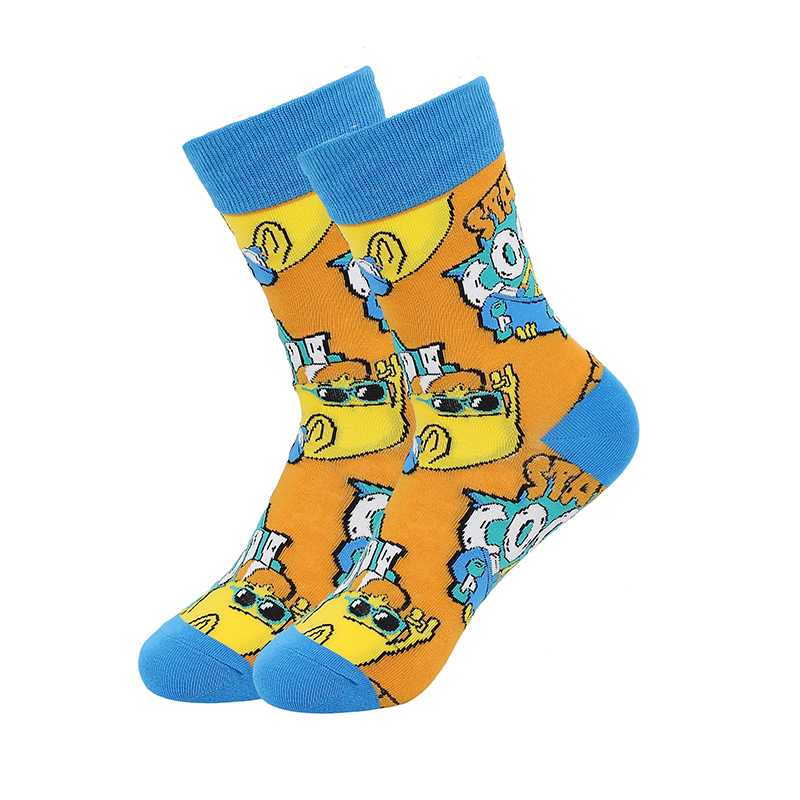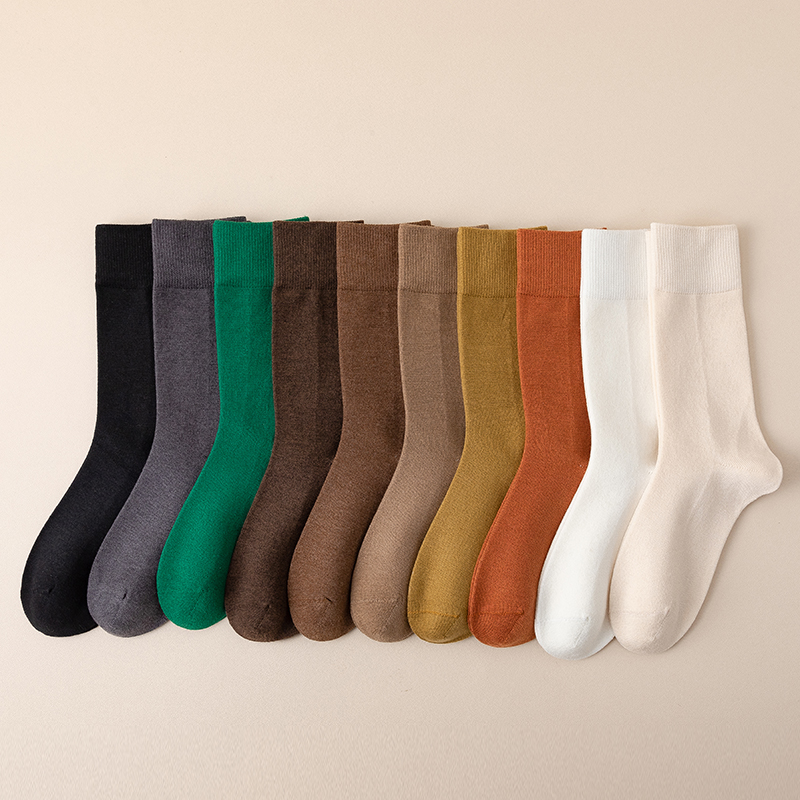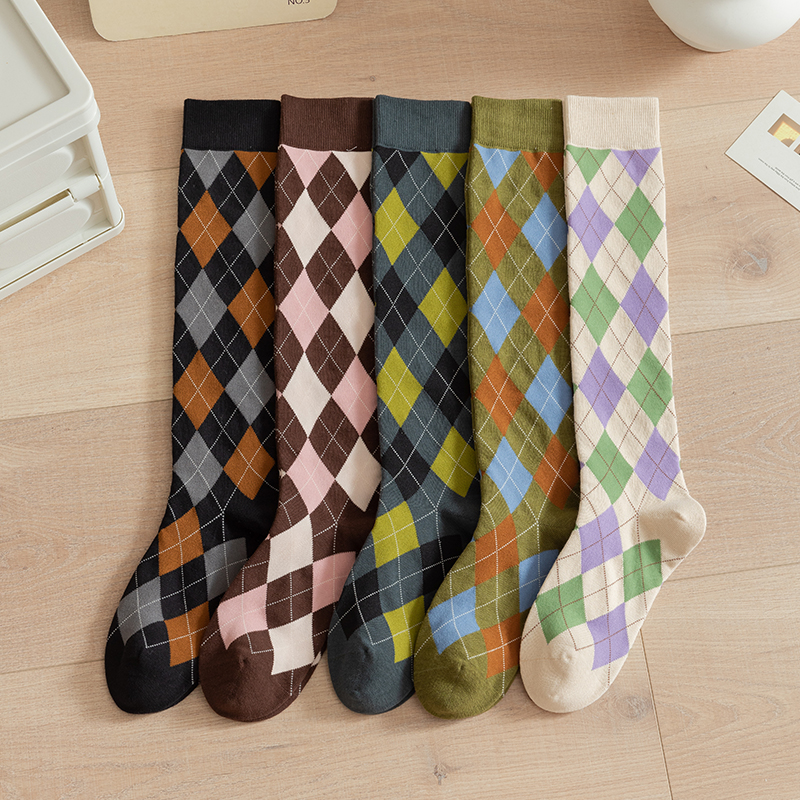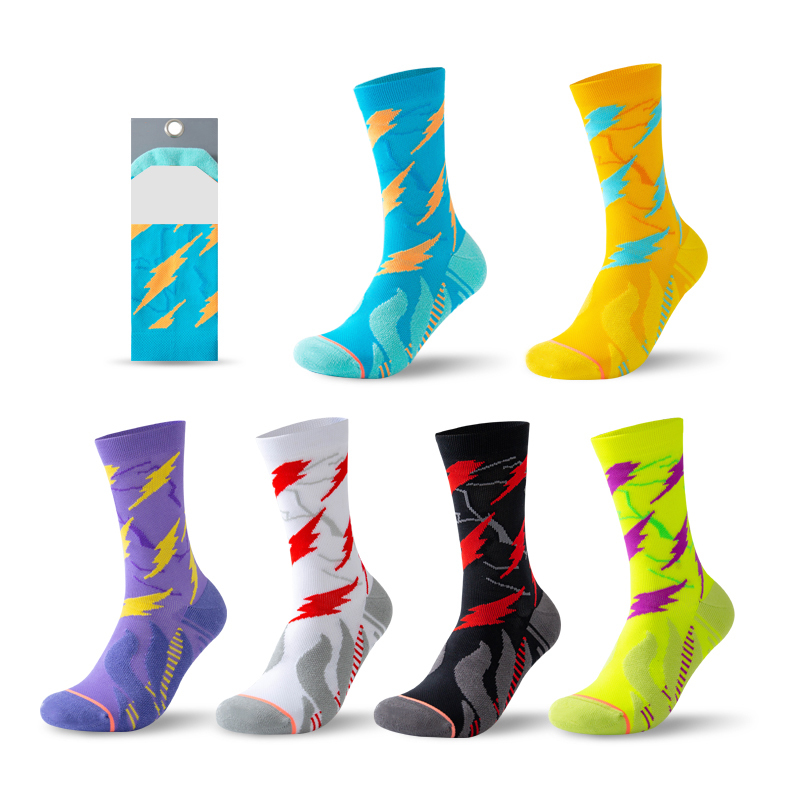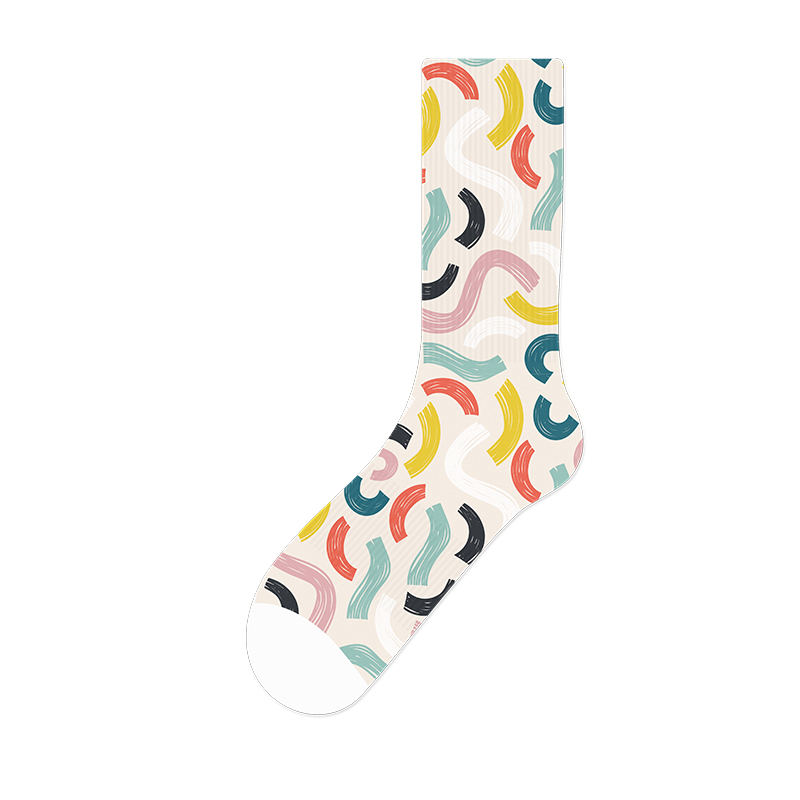As an important part of professional sports equipment, men's basketball socks are constantly evolving in terms of functionality, structural design and material technology. As the most frequent stress and placement in basketball, the heels and forefoots are often designed as partially thickened areas. This thickened structure is not only a reflection of the improvement of comfort, but also an optimization manifestation of actual exercise physiological and mechanical needs. The following describes the important role of its thickening design in detail from six dimensions: cushioning shock absorption, anti-slip stability, friction protection, structural support, fatigue delay and motion performance improvement.
Buffering and shock absorption
The heels and forefoots are the main stress points for jumping, landing and starting in basketball. Every time you take off and land, the impact force of your body several times your own weight will be transmitted to the soles of your feet. The partially thickened design, filled with terry structure or high-density yarn, forms a "buffer layer" in these key areas, significantly reducing the impact of ground reaction forces on the bones, joints and ligaments of the foot.
The thickened area of the forefoot can effectively absorb the front thrust of the forward rush; the thickened area of the heel will play a shock-absorbing role when landing. The two are linked to build a flexible shock absorbing system, which fundamentally reduces the incidence of fatigue damage.
Improve anti-slip stability
In high-intensity exercise, the stability of the foot in the shoe is directly related to the accuracy of motion control and the consistency of motion. Thickened areas are usually designed with three-dimensional braid or terry reinforcement, which increases the contact area between the sock and the insole, creating more friction, thereby preventing slippage or displacement.
The thickened area of the forefoot can provide stronger toe grip during start, steering, emergency stop and other actions; the thickened heel structure stabilizes the position of the foot during the jump and landing, preventing movement deformation or even sprains due to slippage. Overall, the fit between the foot and the inside of the shoe is enhanced, and the wearer's confidence in sports and reaction speed is improved.
Reduce local friction damage
During basketball, long-term and intense exercise can easily lead to repeated friction between local skin and insoles, causing blisters, redness, swelling and even skin damage. The heel and forefoot area are the "high friction frequency points" and are the areas with frequent injuries.
The thickened design provides an additional yarn layer as an "insulation belt" to effectively reduce the direct friction strength between the skin and the inner surface of the shoe. The multi-layer fabric structure can absorb some shear force, slow down friction transmission speed, and improve wear comfort. Especially in high temperature and high humidity environments, the thickness advantage is particularly obvious, and it is an irreplaceable protective structure during long-term competitions or training.
Strengthen local support structure
Thickening of the forefoot and heel not only has a cushioning function, but also has the function of supporting structure. When players make quick horizontal movements, step back, breaking starts, etc., the soles of their feet are pulled and pressed in multiple directions. If the support is insufficient, it is easy to cause local collapse, twisting and other risks.
Thickening at the heel is often combined with the heel cup-shaped weaving, providing stronger vertical and horizontal support, limiting unintentional sliding of the heel. Thickened forefoot can be matched with an arch support belt to enhance the overall structural stability of the sole. Overall, the foot is kept at the appropriate axis and posture during multi-direction movement, improving the stability and accuracy of the movement.
Effectively delay sole fatigue
During long-term exercise, the soles of the feet will experience soreness, numbness, fatigue and other discomfort due to continuous impact and muscle vibration. The thickened area reduces the frequency of vibration conduction and reduces the accumulation rate of muscle micro-damage by releasing the pressure on the plantar nerve endings.
Thickening of the heel can relieve tension of the Achilles tendon and plantar fascia; thickening of the forefoot slows down the concentration of pressure between the forefoot bones and reduces the incidence of pain. The existence of thickness is equivalent to adding a layer of "passive pressure relief net", allowing the soles of the foot to deal with long-term loads more easily and improve the battery life performance in the later part of the game.
Promote sports performance improvement
Excellent basketball socks not only play a role in the protection level, but also play an indirect role in promoting sports performance. The thickened structure of the soles of the foot increases comfort while forming a better "mechanical linkage" between the feet and the shoes, and each force can obtain more stable support and feedback.
The thickness of the forefoot brings stronger feedback force on the ground, which is conducive to the rapid first step of starting and burst; the shock absorption structure in the heel area helps the landing to stabilize quickly, making faster preparations for the next action. The superposition of detailed performance is ultimately reflected in the improvement of speed, control, explosion and endurance.

 English
English
 Español
Español
